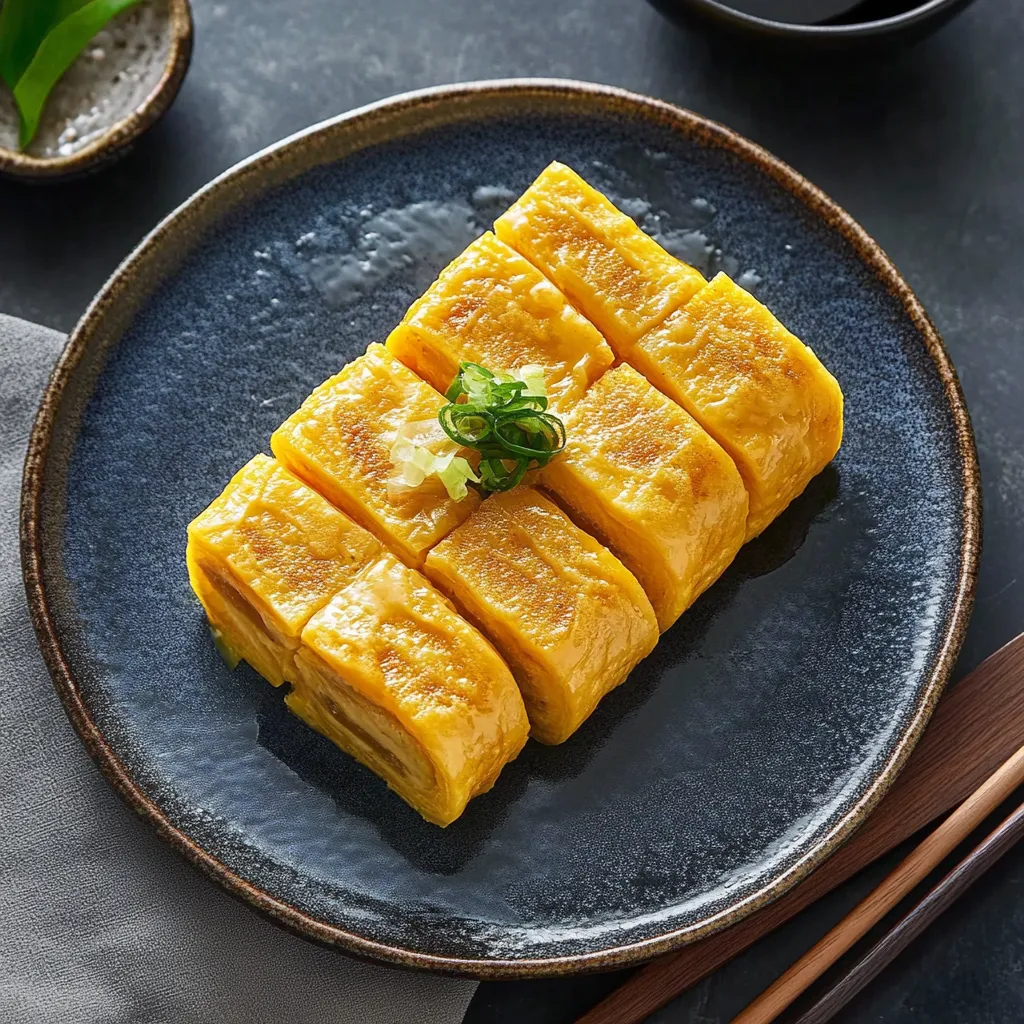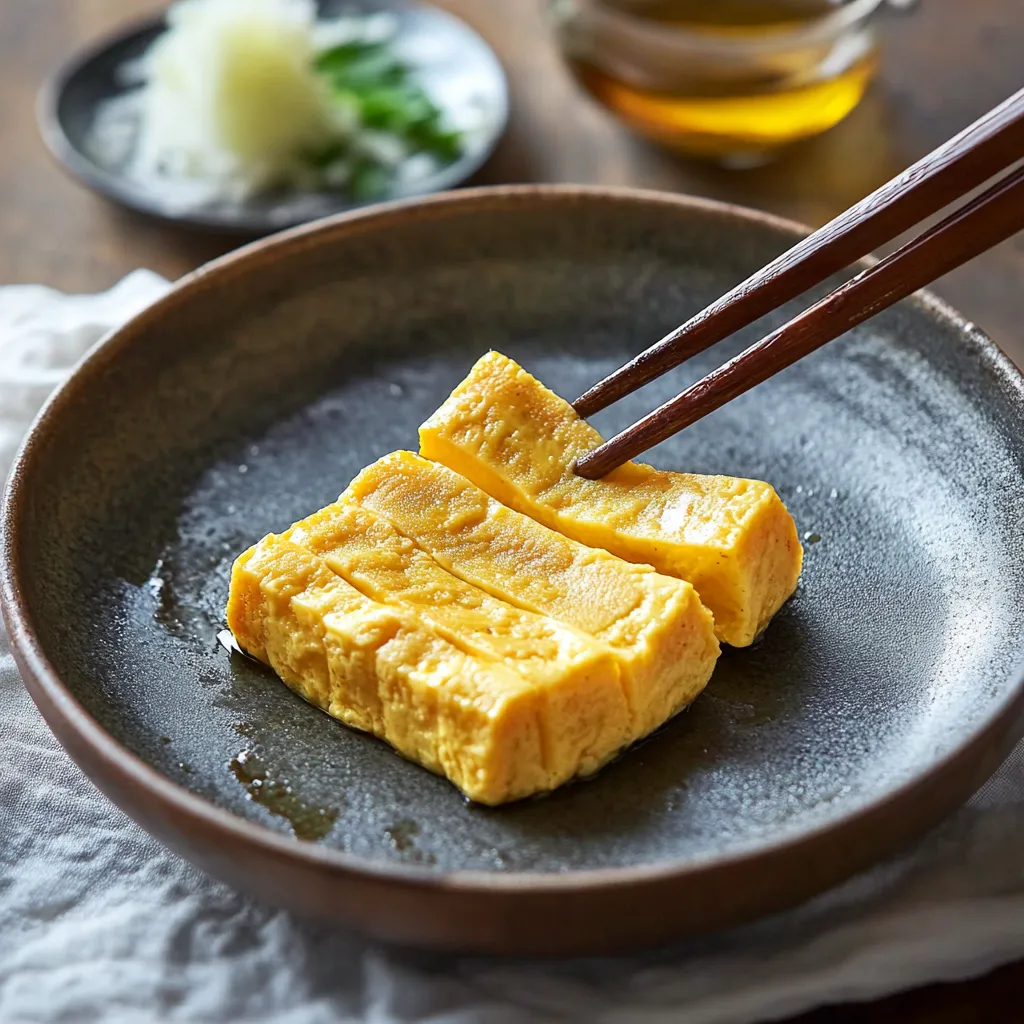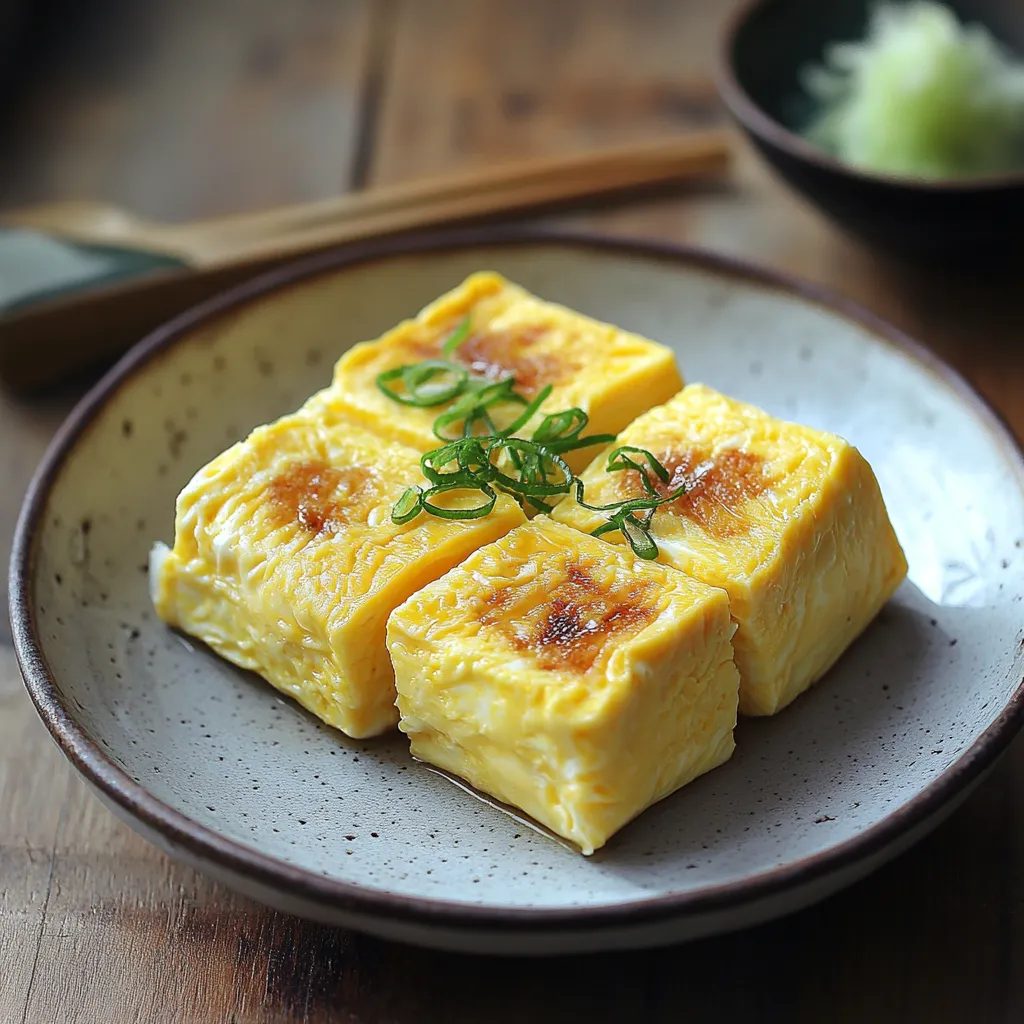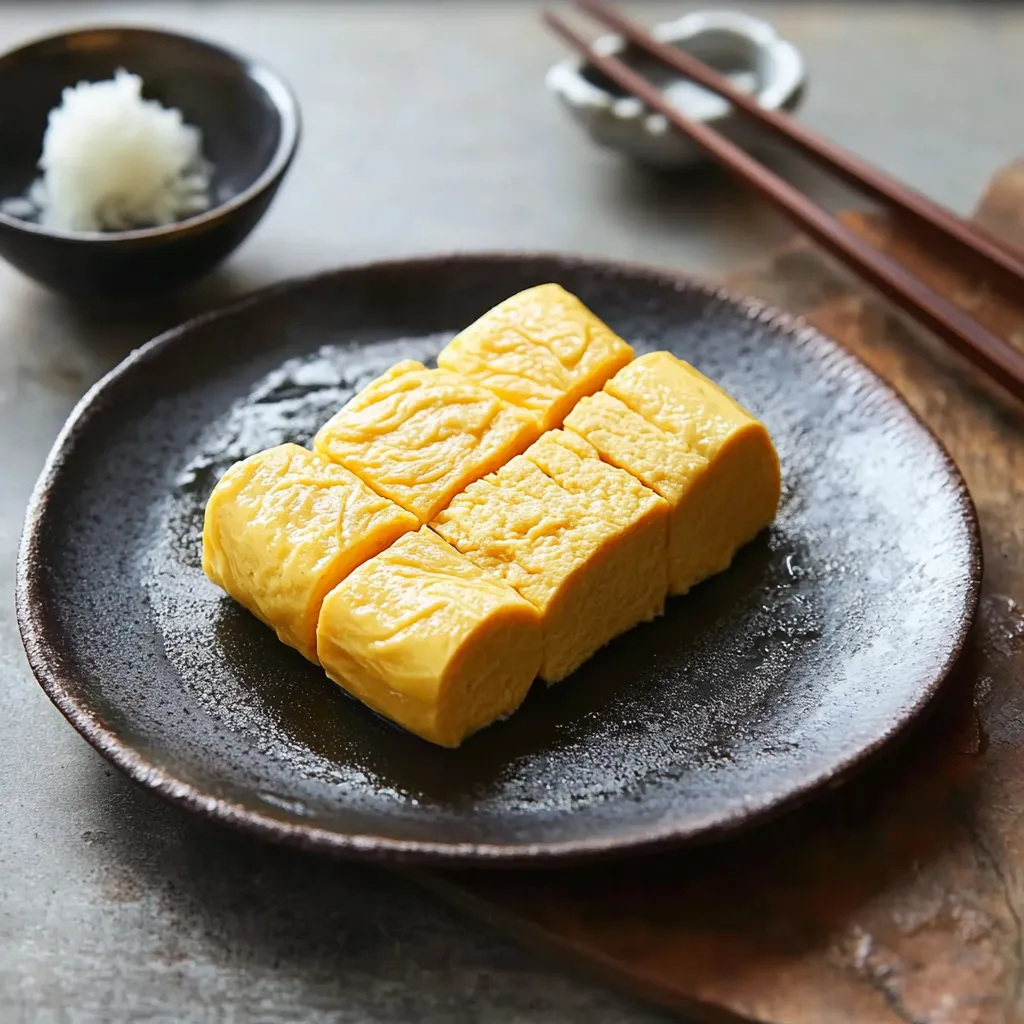 Pin it
Pin it
Making tamagoyaki is all about mastering the subtle interplay of heat, timing, and skill. After practicing this Japanese rolled omelet for many years, I've learned that what makes it special isn't just what goes into it, but the peaceful rhythm of folding those beautiful golden layers. Every fold builds on the previous one, resulting in something that looks amazing and tastes incredible.
I made this at a Japanese-themed breakfast gathering last weekend, and everyone was mesmerized watching the layers come together. Want to know the trick? It's all about figuring out how heat and timing work together to get those soft, custardy layers just right.
Key Ingredients and Smart Selection Advice
- Eggs: Take them out of the fridge early so they're not cold when you start cooking.
- Mirin: Don't skimp here - grab a decent bottle for the real traditional taste.
- Dashi: Nothing beats making it yourself, but the instant stuff works when you're in a hurry.
- Soy Sauce: Stick with Japanese brands for the perfect mix of saltiness and umami goodness.
 Pin it
Pin it
The Preparation Method
- Get your egg mix ready:
- Break eggs with care and mix them gently using chopsticks or a fork until just blended. Slowly add your sugar, mirin, and soy sauce while cutting through the mixture.
- Put it through a strainer:
- Run everything through a fine mesh sieve to get that ultra-smooth texture.
 Pin it
Pin it
Getting Your Heat Just Right
How hot your pan is really matters. Go with medium-low to start and check by putting a tiny bit of egg mix in the pan - it should bubble softly without cooking too fast. Keep tweaking the heat as needed while you cook.
Creating One Layer At A Time
Add a thin coating of egg mix to your pan. When it starts to firm up, carefully lift an edge with your chopsticks or spatula and fold it over itself. Move the rolled part back to where you started and do it again with fresh egg mixture, making sure each new layer sticks to the previous one.
Pro Kitchen Tricks
Traditional Background
Tamagoyaki isn't just food in Japan - it's found everywhere from family breakfast tables to fancy sushi places. Many consider it the true test of a cook's abilities because it demands such care and attention. Different parts of Japan make it differently - some folks like it sweeter while others go for a more savory approach.
How To Serve And Display
- Pair it with a bowl of rice, some miso soup, and pickled veggies for a classic morning meal.
- For something more current, cut it super thin and arrange it at an angle on a long plate with some grated daikon and soy sauce.
Getting Heat And Timing Down Pat
Your pan shouldn't be hot enough to brown the egg but still warm enough to cook each layer quickly. Each portion needs about 30-45 seconds to set, and you should let the finished roll sit for five minutes before cutting. Eat it while it's still warm or at room temp for the best flavor experience.
Ways To Change It Up By Season
- Spring: Mix in some fresh shiso leaves.
- Summer: Throw in some chopped tomatoes or fresh corn kernels.
- Fall: Add some mushrooms or chrysanthemum leaves for flavor.
- Winter: Mix in spinach or nori sheets for richer taste.
Learning Opportunities
 Pin it
Pin it
Making tamagoyaki helps you learn important cooking basics like controlling heat, understanding how proteins cook, and building muscle memory through repeated actions. These skills will make you more confident and capable in the kitchen overall.
Stocking Up On Japanese Basics
- Get yourself some Japanese soy sauce, mirin, and sake for authentic flavors.
- Pick up kombu and katsuobushi so you can make real dashi at home.
- Try different seaweeds to use as garnishes and flavor boosters.
Final Thoughts And Reflections
What makes tamagoyaki so special is how basic yet precise it is. Each fold creates new layers of taste and shows off your growing skills, highlighting what makes Japanese cooking so elegant. Whether you're making it for a fancy breakfast or mixing it into fusion dishes, tamagoyaki teaches you to be patient, use good technique, and appreciate simple ingredients.
After making it countless times, I've realized tamagoyaki isn't just food - it's a way to grow as a cook. Getting good at this doesn't just add another dish to your collection but helps you see the value in the peaceful process of making something truly special.
Frequently Asked Questions
- → Can I still make tamagoyaki without the rectangle pan?
- Yes! While rectangular pans are traditional, a small round nonstick one works too.
- → Is dashi required for tamagoyaki?
- Not really. If you'd like, skip the dashi, though it adds more flavor.
- → Why does my tamagoyaki turn brown?
- Make sure the heat is low. Cooking it too hot can discolor the eggs.
- → Can I make it less sugary?
- Of course! Cut down on sugar or leave it out to suit your taste.
- → How should I store leftover tamagoyaki?
- Place it in an airtight container and refrigerate it. It lasts up to 4 days but serve it at room temp.
